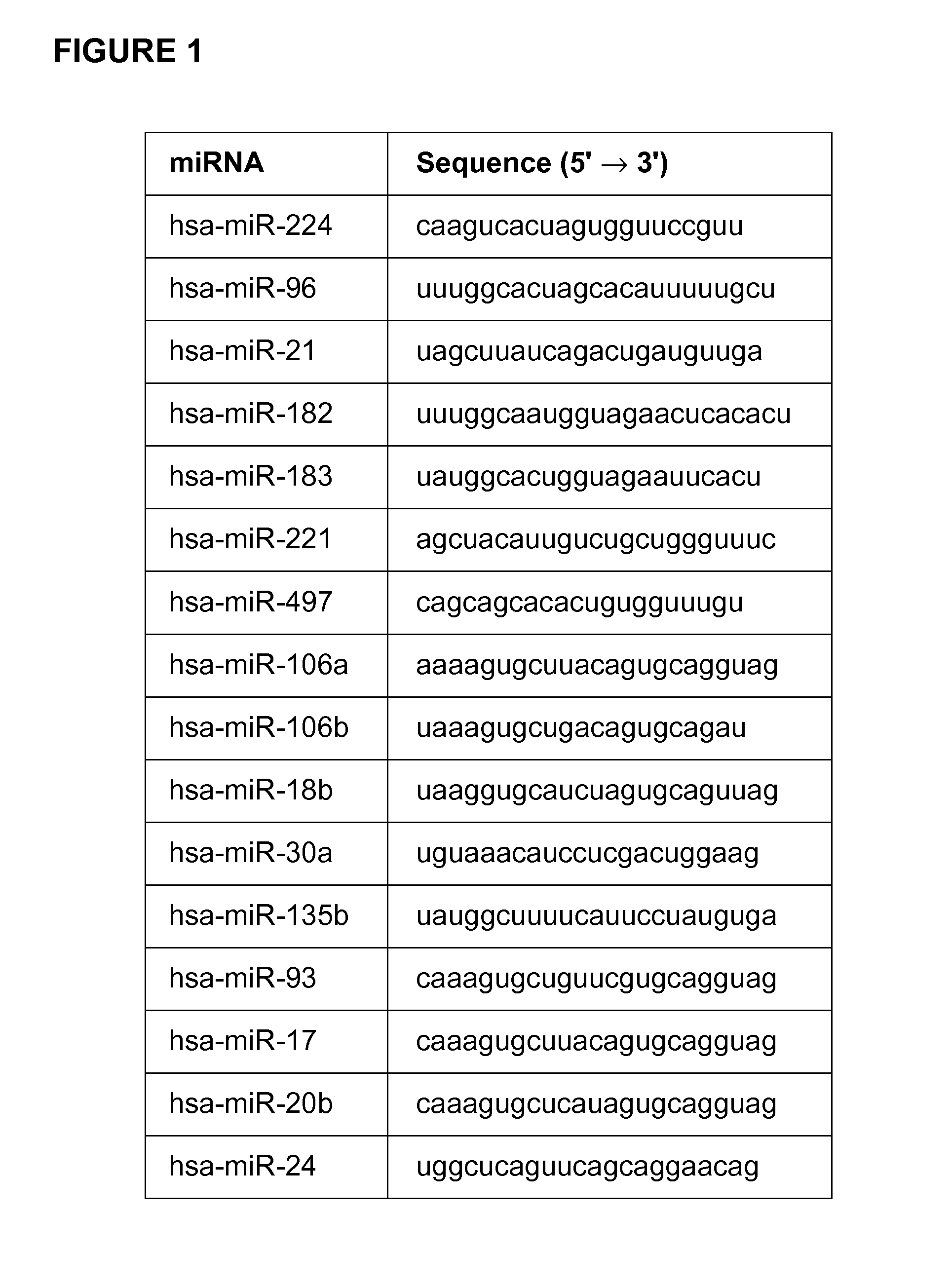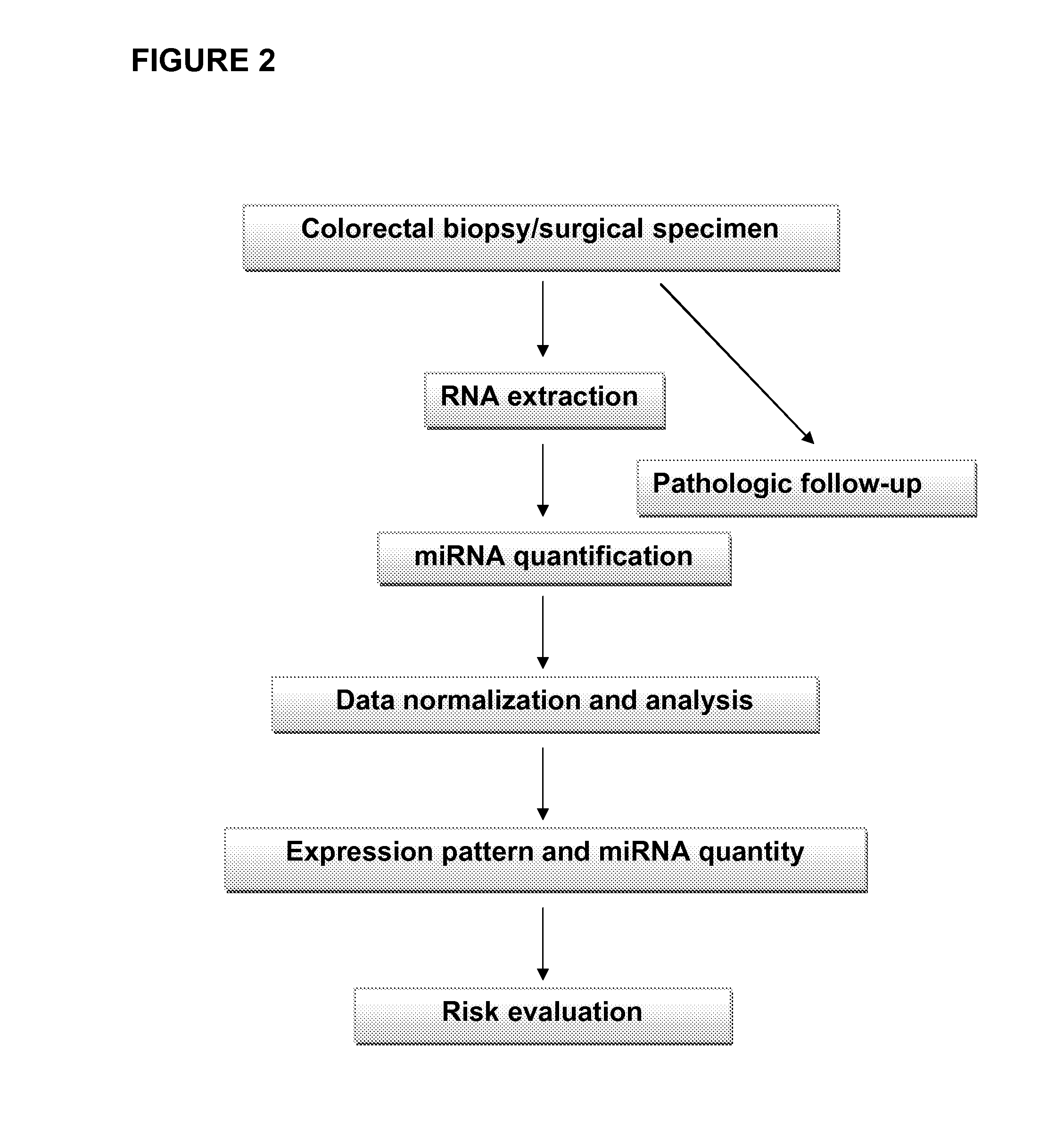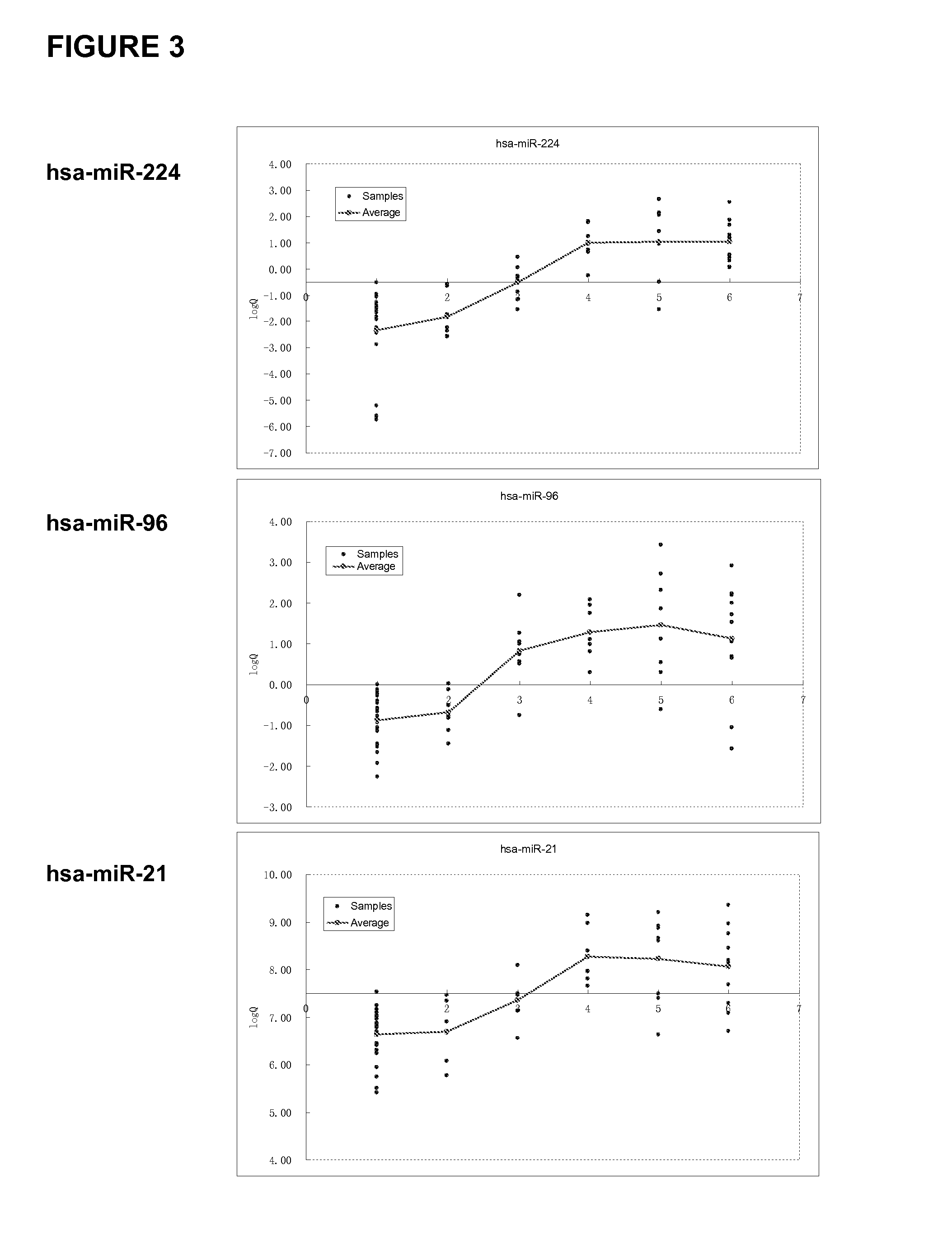Compositions and methods for micro-RNA expression profiling of colorectal cancer
a colorectal cancer and expression profiling technology, applied in the field of colorectal cancer expression profiling and compositions and methods, can solve the problems of affecting detection reliability and/or accuracy, many diagnostic assays are hampered, and single marker normally does not enable detailed predictions concerning latency stages
- Summary
- Abstract
- Description
- Claims
- Application Information
AI Technical Summary
Benefits of technology
Problems solved by technology
Method used
Image
Examples
example 1
Sample Collection and Preparation
[0193]The principal method steps for identifying one or more target cells in a patient's sample exhibiting or having a predisposition to develop colorectal cancer are shown in FIG. 2.
[0194]Surgical specimens were snap-frozen in liquid nitrogen at or immediately after collection. Samples may be stored at −80° C. The following clinical samples were used: 51 normal tissues, 13 inflammatory adenomatous polyps, 16 tubular adenomas, and 59 adenocarcinomas (13 Dukes A, 19 Dukes B, 19 Dukes C, 5 Dukes D, and 3 hepatic metastases).
[0195]Patient data (age, sex, imaging data, therapy, other medical conditions, family history, and the like) were derived from the hospital databases for matching the various samples collected. Pathologic follow-up (for example, histological analysis via hematoxylin and eosin (H&E) staining) was used for evidently determining the disease state (i.e. healthy control, adenoma, adenocarcinoma or intermediate state) of a given sample as...
example 2
Analysis of the miRNA Expression Profile in the Samples
[0199]A qualitative analysis of the miRNAs (differentially) expressed in a particular sample may optionally be performed using the Agilent miRNA microarray platform (Agilent Technologies, Santa Clara, Calif., USA) according to the manufacturer's instructions. The raw data obtained for single-color (CY3) hybridization were normalized by applying a Quantile method and using the R software known in the art.
[0200]The quantitative analysis (verification) of the miRNA expression data obtained was typically performed via real-time quantitative RT-PCR employing a TaqMan MicroRNA assay (Applied Biosystems, Foster City, Calif., USA) according to the manufacturer's instructions.
[0201]Alternatively, the quantification of the miRNAs may be performed by using real-time quantitative RT-PCR employing SYBR Green I (Sigma Aldrich Corporation, St. Louis, Mo., USA), an asymmetrical cyanine dye binding to double-stranded DNA. The resulting DNA-dye-c...
example 3
Sample Collection and Preparation
[0239]The principal method steps for identifying one or more target cells in a patient's sample exhibiting or having a predisposition to develop colorectal cancer are shown in FIG. 6.
[0240]225 tissue specimens from colorectal cancer patients were surgically resected. The tissues were procured immediately after surgery, embedded in optimum cutting temperature (OCT) compound, fast-frozen in liquid nitrogen and stored at −80° C. Baseline characteristics of the tumour specimens for the discovery and validation studies are shown in Table 12. Matched normal colorectal tissues (at least 10 cm from tumor loci), inflammatory polyps and adenomas were from the same patients who had carcinomas.
[0241]
TABLE 12Baseline characteristics of the tumour specimensColorectal specimensDiscoveryValidationControl tissuesNormal4034Inflammatory polyp108Adenoma1513CarcinomaDukes' A128Dukes' B129Dukes' C1615Dukes' D1716No. of tissue specimens122103
[0242]Patient data (age, sex, i...
PUM
| Property | Measurement | Unit |
|---|---|---|
| emission wavelength | aaaaa | aaaaa |
| absorption wavelength | aaaaa | aaaaa |
| temperature | aaaaa | aaaaa |
Abstract
Description
Claims
Application Information
 Login to View More
Login to View More - R&D
- Intellectual Property
- Life Sciences
- Materials
- Tech Scout
- Unparalleled Data Quality
- Higher Quality Content
- 60% Fewer Hallucinations
Browse by: Latest US Patents, China's latest patents, Technical Efficacy Thesaurus, Application Domain, Technology Topic, Popular Technical Reports.
© 2025 PatSnap. All rights reserved.Legal|Privacy policy|Modern Slavery Act Transparency Statement|Sitemap|About US| Contact US: help@patsnap.com



